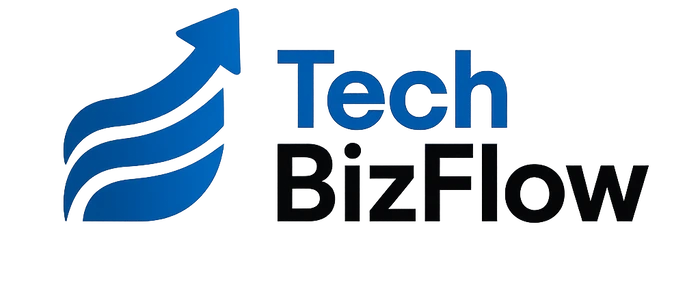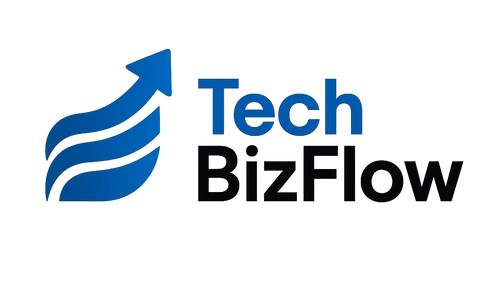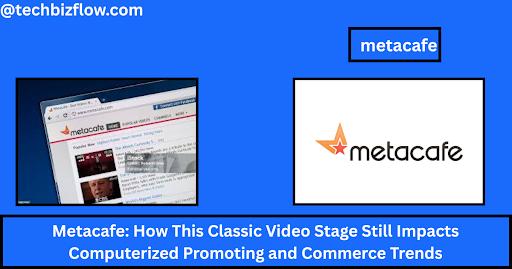In the fast-paced world of computerized media, where stages rise and fall within a few brief moments, Metacafe stands as a curious relic, not just of early web culture but of the roots of video marketing itself. Although it may not overwhelm features or client measurements nowadays, Metacafe’s legacy still discreetly shapes the techniques of advanced digital marketers and trade thinkers.
This article examines how Metacafe, once a dynamic hub of online video entertainment, established patterns and standards that continue to influence digital marketing and online commerce models long after its peak.
The Metacafe Time: A Brief Retrospective
Before YouTube became a family name, Metacafe was already building a devoted audience. Launched in 2003, Metacafe was one of the most punctual sites devoted solely to short-form video content. It centered on amusement, from motion picture trailers and user-generated stunts to movement and viral clips.
Unlike other locales that battled to direct or monetize early web content, Metacafe executed a few developments that would afterward gotten to be standard in advanced promoting and video distribution.
But to get it how it still influences advanced showcasing, we must begin with getting it what Metacafe did right.
The Control of Short-Form Locks in Video
Even some time recently, TikTok, Instagram Reels, or YouTube Shorts, Metacafe built its whole offer around brief, edible recordings. The stage energized makers to keep substance smart — ordinarily beneath 10 minutes — and intensely emphasized watcher engagement.
This commitment to brevity and engagement originates before the now-common mantra in promoting: “capture consideration rapidly or lose the watcher.” Brands nowadays spend fortunes optimizing their recordings to meet brief consideration ranges — a drift Metacafe impulses are inclined into from the start.
Takeaway for Marketers:
- Keep substance-centered, brief, and high-value.
- Optimize for early engagement (inside the to begin with 3–5 seconds).
The Maker Rewards Program: A Forerunner to Maker Economy
Long some time recently, the term maker economy enteredthe standard lexicon, Metacafe was paying video makers genuine cash through its Maker Rewards Program. By compensating makers whose recordings passed a certain quality limit and accomplished a least number of sees, Metacafe successfully spearheaded the monetization demonstrate we presently see on stages like YouTube, TikTok, and indeed Patreon.
This framework incentivized quality, inventiveness, and virality. For numerous trying producers and substance makers in the 2000s, it was their to begin with taste of making cash online, not from advertisements they set, but from the stage fulfilling their contribution.
Influence on Commerce Trends:
- Inspired the presently omnipresent ad-revenue sharing models.
- Validated that paying makers leads to higher-quality content.
- Reinforced the thought that user-generated substance seems be professional-grade.
Curated, Not Cluttered: A Quality-First Approach
Unlike the algorithm-driven free-for-alls we see nowadays, Metacafe had human editors and a voting framework to clergyman what made it to the front page. Whereas not culminate, this approach gave the stage notoriety for highlighting really great content.
This publication oversight made a sense of belief in watchers. They knew the beat recordings were not as it were well known but had a few degree of quality control.
Modern Implications:
In today’s scene of calculation over-burden and clickbait, Metacafe’s ancient show serves as an update of the esteem of curation and control. Brands looking to stand out presently frequently depend on curated content methodologies — from bulletins and blogs to TikTok playlists — to raise quality over quantity.
Built-in Virality: Social Sharing. Some time recently, Social Media
Although Metacafe existed some time ago, Facebook and Twitter took over the web, and it recognized the significance of virality. Each video came with simple sharing apparatuses — insert codes, email-forwarding buttons, and download options.
The stage energized clients are not fair to observe, but rather to spread the content.
In numerous ways, this was an early shape of what marketers presently call dispersion methodology — how content gets from the creator to the group of onlookers, and from the group of people to the more extensive world.
Today’s Reflection:
Modern advanced showcasing flourishes on shareability. Brands plan content particularly for stages like Instagram, X (once Twitter), and TikTok with the objective of starting virality. Metacafe expected this, understanding that the esteem of substance increments exponentially when clients share it freely.
Lessons in Community Building
Metacafe was more than a video location; it was a community. Comment segments, evaluations, and visit donors made sense of having a place among users.
Unlike the faceless, detached utilization regularly seen on today’s stages, Metacafe empowered interaction and input. This built dependability, an uncommon product in today’s hyper-saturated substance world.
Relevance to Trade Today:
Brands nowadays battle to cultivate genuine association. Metacafe’s show fortifies that computerized victory isn’t fair almost broadcasting — it’s almost building two-way discussions. Comment control, community motivating forces, and personalized engagement are all cutting-edge echoes of this early strategy.
Simplicity Over Complexity
Metacafe’s interface was direct: no complex menus, no diversions. You came to the location, and in seconds, you were observing something that interested you.
In an age where numerous websites and apps are suffocating in pop-ups, auto-playing advertisements, and intermittent tabs, Metacafe’s user-first plan feels nearly progressive in hindsight.
Marketing Insight:
Simplicity builds belief. Brands that prioritize client encounter — clean plan, quick stacking, natural route — are more likely to hold clients. Whether it’s a landing page, app, or mail campaign, decreasing bounce rate is critical.
The Decrease of Metacafe: A Missed Opportunity or Normal Cycle?
Despite its early victory, Metacafe didn’t advance quickly sufficient. It didn’t adjust to the rise of social media, mobile-first utilization, or Google’s dominance. YouTube, supported by Google’s assets, inevitably surpassed Metacafe in both scale and innovation.
But that doesn’t make Metacafe a disappointment. On the contrary, its bequest is unmistakable in the DNA of about every successful video stage today.
Business Lesson:
Innovation alone isn’t sufficient. Timing, versatility, and biological system associations frequently decide life span. Metacafe’s story reminds us that early authority must be accompanied by ceaseless evolution.
Where Metacafe’s DNA Lives On
Even though the stage blurred from unmistakable quality by the 2010s, Metacafe’s impact is everywhere:
- YouTube’s monetization owes much to Metacafe’s early maker payments.
- TikTok’s viral show reflects Metacafe’s short-form, engagement-first video style.
- Instagram’s Reels and Stories resonate with Metacafe’s focus on user-generated entertainment.
- Newsletter curation models mirror Metacafe’s publication approach.
- Brand communities on Strife and Reddit reflect the early sense of having a place that Metacafe cultivated.
These aren’t fair coincidences — they’re verification of enduring influence.
Metacafe’s Lessons for the Future of Advanced Marketing
Let’s break down the persevering lessons Metacafe offers to advanced marketers and commerce pioneers today:
1. Compensate Substance Creators
The stages and brands that succeed in today’s world compensate and enable makers. Whether it’s through revenue-sharing, associate bargains, or select organizations, makers are presently central to the showcasing funnel.
2. Prioritize Quality and Relevance
Algorithmic conveyance without curation leads to clutter. Metacafe’s emphasis on quality substance reminds us to center on esteem, not volume.
3. Empower Sharing Natively
Don’t depend on clients to do the work — make sharing consistent. From CTA buttons to branded hashtags, empower natural dissemination from the to begin with interaction.
4. Construct Community, Not Fair Audience
Engagement goes past likes. Genuine brand dependability is built through interaction, talk, and input. Metacafe has flourished since it made watchers feel like participants.
5. Plan for Attention
In a mobile-first, fast-scrolling world, the plan must capture consideration right away. Keep interfacing clean, substance-centered, and intuitive.
Case Ponder: A Brand Motivated by Metacafe
Let’s consider a present-day illustration — the rise of Duolingo’s social media presence. Even though not a video stage, Duolingo has adopted numerous Metacafe’s principles:
- Short-form, clever, profoundly shareable substance (think: TikTok skits).
- Community engagement through comments and challenges.
- A clear, natural, portable experience.
- Consistent quality without overproducing.
This advanced application of Metacafe-era intelligence suggests that immortal standards can still yield new results.
Could a Stage Like Metacafe Work Today?
It’s a curious address. The advanced scene is soaked, consideration is divided, and major stages rule the conversation.
Yet wistfulness, effortlessness, and creator-first models are making a comeback. Micro-platforms, specialty video communities, and elective monetization strategies (like Substack or decentralized substance proprietorship through blockchain) imply an advanced renaissance.
Could a Metacafe 2.0 — stripped of commotion, curated for quality, built for makers — flourish again?
Possibly. But it would require laser-sharp center, a community-first mindset, and a return to straightforwardness that today’s cluttered stages frequently ignore.
Final Contemplations: Metacafe Wasn’t Fair a Stage — It Was a Blueprint
While Metacafe may not possess the computerized organization nowadays, it played a featured part in forming how we make, distribute, and expend video content. From short-form narrating and maker monetization to community engagement and user-friendly plan, its fingerprints are all over in today’s showcasing playbook.
For marketers, commerce strategists, and computerized business visionaries, looking back at Metacafe isn’t approximately wistfulness — it’s approximately recollecting what made substance human, fun, and important in the to begin with place.
In a time fixated with calculations and computerization, the heart of Metacafe reminds us: substance still matters when it interfaces, engages, and empowers
FAQs
What was Metacafe known for?
Metacafe was a pioneer in short-form video content and one of the to begin with stages to pay creators for popular uploads.
How did Metacafe impact computerized marketing?
It presented early concepts of maker monetization, viral sharing, and curated substance that cutting-edge stages presently depend on.
Is Metacafe still dynamic today?
Whereas the location exists in a constrained shape, it no longer works as a major video-sharing platform.
What can marketers learn from Metacafe’s legacy?
Marketers can learn the significance of quality substance, community engagement, and straightforward user-first design.


